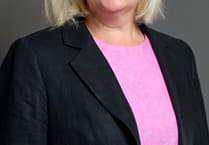In February, the Minister of State for Local Government and English Devolution, Jim McMahon, wrote to Devon’s two-tier and unitary councils, urging them to work together on a proposal for unitary local government across the region. He recommended this proposal align with devolution plans and, ideally, be jointly submitted.
However, McMahon also acknowledged that this might not be possible everywhere – a realistic view, given the existing tensions. Just weeks earlier, Plymouth, Devon County, Exeter and Torbay had all held separate meetings about the Devolution White Paper, making clear they would each develop their own proposals.
By mid-March, those individual proposals were due, and once again the four councils met separately to confirm their intentions.
Meanwhile, Devon’s district councils had already announced a joint ambition to create two new unitary councils: one combining South Hams, West Devon, Teignbridge and Torbay; the other uniting East, Mid and North Devon, Torridge, and Exeter.
Plymouth was not included in this plan.
At its own meeting, Exeter confirmed its aim to become a standalone unitary. Plymouth and Torbay, already unitaries, were equally determined to retain their status.
Plymouth Council leader Tudor Evans said: “Plymouth must continue to run Plymouth and services in Plymouth. But… we need to listen to what is being said in the legislation.”
What’s being said, as Torbay leader David Thomas pointed out, is that “there will be no more small unitaries.” The government now favours authorities with populations of 500,000 or more – a benchmark neither Torbay nor Plymouth meets.
Together, they cover just over 267,000 people, well short of that target. But McMahon had previously said there could be exceptions where 500,000 is not realistic, leaving some room for negotiation.
Still, both councils would need to expand quickly to protect their autonomy.
Plymouth’s approach is clear: it proposes absorbing 13 South Hams parishes, from Woolwell and Ivybridge to Holbeton and Noss Mayo. The move would increase Plymouth’s population by 29,000 and could help it retain its unitary status.
Torbay, meanwhile, has signalled a willingness to consider multiple options. While it would prefer to stay as is or expand modestly to mirror its local care partnership area, it has also agreed to support a wider proposal – merging with South Hams, West Devon and Teignbridge into a single unitary.
Nicknamed the Southern Devon Council, this new authority would span nearly 2,800km², from Salcombe in the south to Hatherleigh in the north, and from Brixham to Lifton.
This raises an important concern: while the proposal is ‘unitary’, is it really local?
Merging vast rural districts with smaller urban centres risks sidelining community priorities. And while it might make sense for places like Sherford or Woolwell to be part of Plymouth, the inclusion of more rural parishes feels less clear-cut.
Residents in villages like Mary Tavy or Moreleigh may find their interests diverging sharply from those in urban Torquay or Paignton.
So what benefits will this reorganisation actually bring to South Hams residents?
To explore the question, the South Hams Society is hosting a public meeting with Cllr David Thomas (Torbay), and Plymouth City councillors Jemima Laing and Sally Cresswell on Thursday, April 24, at 6.30pm in the Council Chamber at Follaton House.
If you have a question, please email it to [email protected].
Admission is free To reserve a place, email [email protected].




